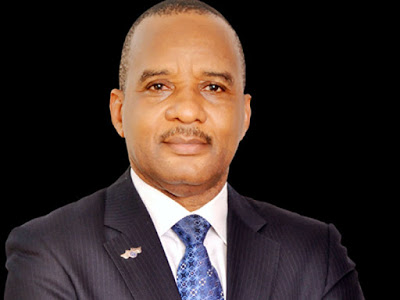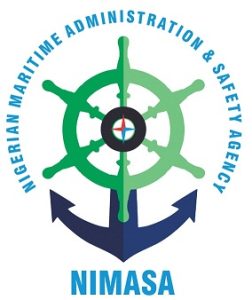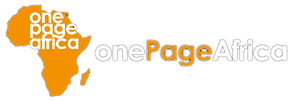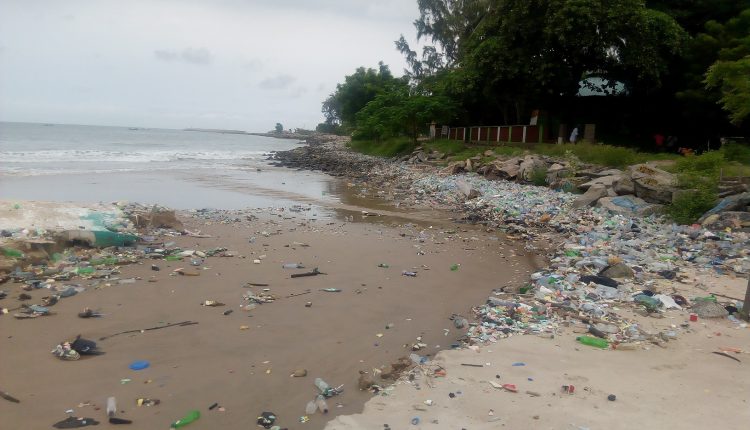A look at NIMASA’s strategy, actions on marine litter management as Nigeria deepens efforts toward healthy oceans

The United Nations Decade of Ocean Science for Sustainable Development (2021-2030) states that the ocean must be clean to sustain life and economic activities. In that regard, it purposed the ‘ 2030 Agenda’ for ocean health to have stakeholders identify pollutants and their sources by 2025, and by 2030, society should have been supported enough to adjust its activities to ensuring minimising marine environment pollution, and growing the Blue Economy.(United Nations, 2021).
The Blue Economy rests on a collection of interrelated actions that demand purposeful contributions by each component for it to really work and serve the good for humanity’s continued survival.
Key among the components is the health of the oceans (SDG 14) in which the resources lie; for every other thing to work and function valuably, the seas and oceans must be healthy. This means there must be structure set in place to police human activities as they impact directly on the ocean ecosystem.

It is for the reason of developing actionable structure for healthy oceans that the Sustainable Development Goal (SDG) Target 14.1 states that ‘By 2025, prevent and significantly reduce marine pollution of all kinds, particularly from land-based activities, including marine debris and nutrient pollution’ (Target 14.1).
Expectedly, global efforts to protect the oceans from pollution of every sort are being undertaken by governments, agencies and environmental care organisations.
Therefore, considering its role in ensuring safe and cleaner oceans, the Nigerian Maritime Administration and Safety Agency(NIMASA) rose to the responsibility of developing the first Maritime Action Plan on Marine Litter and Plastic Management in Nigeria(MAP-ML+P), with remarkable effort of including relevant contributors(SDG 17), an aspect that the Director General of NIMASA, Dr. Bashir Jamoh, considers very key to enabling planned actions .
State of Affairs on Ocean Health
The oceans are not particularly healthy, with scary data showing that over 5 trillion pieces of macro and micro pieces of plastic litter the oceans, while 8 million tons of plastic enter the ocean yearly, there at least 269,000 tons of plastic inside the ocean, making plastic marine litter a significant problem in the world’s oceans (National Geographic 2019; NAMEPA, 2022).
Data also show (iucn, 2021)that at least 80% of marine litter coming from land-based sources is as a result of poor solid waste management, storm water, runoff, sewer overflows, littering and illegal dumping, particularly around coastal nations. For ocean-based plastic pollution, the sources are primarily from the fishing industry, nautical activities and aquaculture. Sadly, it is also established that less than 50 per cent of plastic waste is collected in developing countries, while approximately 90 per cent of waste is burned or ends up in open dumpsites.
Consequences
The United States Environmental Protection Agency (EPA, 2022) states that, “Plastic waste harm physical habitats for wildlife, transports chemical and nutrient pollutants, and interferes with human uses of river, marine and coastal environments.” When plastics come under the influence of solar UV radiation, wind, currents and other natural factors, it breaks down into small particles called microplastics (particles smaller than 5 mm) or nanoplastics (particles smaller than 100 nm). And the small size makes them easy for marine life to ingest accidentally.
NIMASA’s Efforts in line with Global Frameworks for Marine Litter Control
As the IUCN (2021) calls for efforts by nations to adhere to and strengthen existing international legislative frameworks to address marine plastic pollution, the Nigerian Maritime Administration and Safety Agency(NIMASA) confirms its implementation of the London Protocol. Head of Environmental Impact Assessment in NIMASA, Mr. McDennis Igbo, explained that: “The London Protocol is an instrument we implement to control marine litter- Convention on the prevention of dumping of waste at sea. The London Protocol has been expanded to cover the prevention of waste from upland into the marine environment.”
With reference to legal frameworks, the IUCN stated that: “The most important are the 1972 Convention on the Prevention of Marine Pollution by Dumping Wastes and Other Matter (the London Convention), the 1996 Protocol to the London Convention (the London Protocol) and the 1978 Protocol to the International Convention for the Prevention of Pollution from Ships (MARPOL).”
The NIMASA Maritime Action Plan for Marine Litter and Plastic Management in Nigeria
The NIMASA strategic Maritime Action Plan for Marine Litter and Plastic Management (MAP-ML+P) was borne out of the agency’s recognition to protect the marine environment from destruction as a result of fast moving consumer lifestyle, manufacturing and poor waste disposal patterns.
At a stakeholders’ meeting revising the Maritime Action Plan in 2021, Director General of NIMASA, Dr. Bashir Jamoh, reiterated the Agency’s resolve for developing the first Maritime Action Plan on Marine Litter and Plastic Management in Nigeria (MAP-ML+P) as an urgent response to minimise the vulnerability of the nation’s vast maritime domain and enormous population. The Working Document is built on six thematic themes of activities aimed at achieving attitudinal change, extended producer accountability, innovative development of alternatives to single-use plastics, eco-friendly fishing, and regulatory controls.
The focus actions include, to combat land-based sources of marine litter; to combat sea-based sources of marine litter; actions for Legislation, Policies and Enforcement; Monitoring and Research programmes; Education and Advocacy on the issues of Marine Litter; Actions to Encourage Extended Producers Responsibility(EPR) and Green Purchasing.
Establishment of a National Taskforce Team
For the purpose of public stewardship and effective implementation of the Maritime Action Plan, NIMASA constituted a task force on Marine Litter and inaugurated to coordinate the full execution of the roadmap. The membership of the Task Force was drawn from the various sectors of ocean governance in line with SDG Goal 17 (Partnerships).
Remarkable in the structure are the clean-up exercises the Agency continues to embark on, of mapped marine litter hotspots. Importantly too, is the engagement of youths in coastal areas to serve as marine litter volunteer marshals for the implementation of Maritime Action Plan on Marine Litter and Plastics Management in Nigeria.
Working Structure
NIMASA originally was concerned with marine litter from the ship source; looking at Annex 5 of MARPOL.
Under this Annex are provisions to ensure that ships with 500 gross tonnage and upwards must have garbage management plan, receptacles inside the ships where they must keep record of it and their incinerators. And every ship coming to the port must dispose of the collected garbage in the port receptacles; port reception- port reception facilities and offshore reception facilities.
NIMASA has officers who perform port state control duties by carrying out regular checks as ships arrive at Nigeria’s ports. To ensure compliance, they check the ships’ garbage receptacles- officers look at the distance a vessel covered, the number of people (Crew), and they are be able to determine the volume of waste expected to have been generated, in addition to interviewing the ship master, to ensure they are in line with the regulations.
According to Mr. Igbo, while the Nigerian Ports Authority(NPA) provides the port reception facilities through its vendor, NIMASA monitors to ensure that the facilities are available and adequate for port reception, and ensure that each vessel calling the ports empty their garbage into the port receptacle. The Agency follows the process through till completion by ensuring that wastes received are properly treated and disposal system conforms to best practices. However, NIMASA is directly responsible for waste reception and management for offshore platforms.
Sensitization/Campaign
NIMASA has in the last five years intensified sensitization campaigns, particularly around coastal areas, to educate the communities and engage the people with the aim of ensuring proper waste disposal. This effort is geared toward sustaining cleaner waters for safer shipping and to enhance maritime capacity in line with global best practices for the development of national economy.
Sensitization of Coastal Communities and Clean-up exercises
NIMASA’s sensitization campaign in coastal communities has focused on engaging the communities to understand the importance of supporting healthy seas and oceans by not polluting them with all manner of waste including plastics.
“A key message we take to the coastal communities is that water can have enemies in people who dump waste indiscriminately into it,” Igbo said explaining the reactions following the messages, “The communities were surprised to hear that. We made them know that it even brings back great danger after the fishes and other sea animals may have eaten the waste (plastic) and we get them as food, already polluted by the waste. Each time we tell them this, they are sober.”
Till date, NIMASA has taken up sensitization of communities as well as clean-up exercises. The Marine Environment Management officers of the Agency have carried out detailed survey and mapping of the Marine Litter hotspots. Some of the communities include Epe Fish Market, Ibeshe, Ikorodu, Badagry, Apapa, and Port Novo Creek, which serves heavy maritime traffic and opens into the Kirikiri axis.
Others are the Five Cowrie Creek, a small river that separates Ikoyi/Lagos Island from Victoria Island/Lekki, Elegbeta Channel- body of water that separates the Marina business district from the Apapa industrial and port district, and Ogogoro Island.
Waste removed from these marine environment included domestic waste, polythene bags, nylon, sachet water bags, bottle water plastics, plastic utensils, cans, fruits, Styrofoam food packs, clothes, food wrappers, fibre boat foams, empty cigarette packs.
In Delta State, clean-up exercises have taken place in Mila water front by Warri Port axis, Ogbe-Ijoh and Gbesu market areas, as well as Olabrakonpre and Boluo-Ama.
The Marine Environment Management (MEM) department of NIMASA confirms that the working document developed for effective management of marine litter in Nigeria provides a reliable structure to keep the campaign and clean-up exercises sustainable.
By Hope Orivri, an Environmentalist and a Communication for Development Specialist.

